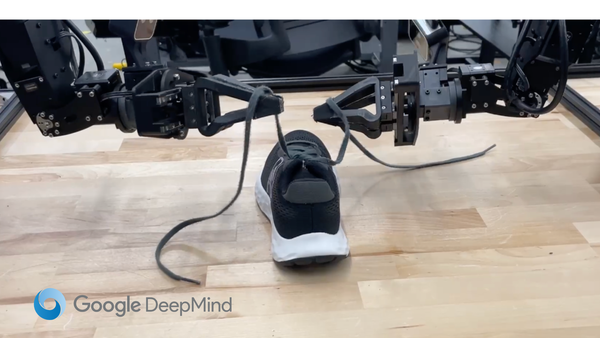The Battle for Humanoid Dominance
In today's newsletter, we explore the intense rivalry in humanoid robotics between the U.S. and China. We'll also discuss the innovative GenAI humanoid hand from Swiss startup “mimic” and Agility Robotics' groundbreaking partnership with Zion Solutions Group.

Good morning! We have some exciting updates today. First, I added a new fundamentals article discussing the key components of humanoids. I'll update the article as insights emerge.
Second, it's critical to watch and understand how the Humanoid market is evolving in the U.S. and China. Each country seems to be taking a different approach, so we'll explore what's happening in those markets.
Third, a Swiss startup is advancing humanoid hand technology with a $2.5M pre-seed investment.
Last, Zion Solutions announced they would become the first systems integrator for Agility Robotics. The humanoid robot ecosystem will need to develop (and fast) for the market to reach TAM expectations.
Before you jump into the news, check out the new article on key components below. 👇
The Battle for Humanoid Robot Dominance: U.S. vs. China
The global competition for dominance in humanoid robotics is intensifying, with China and the U.S. at the forefront. This rivalry is fueled by advancements in AI and robotics technologies, with each nation pursuing different strategic approaches.
China wants to integrate humanoid robots into its industrial modernization efforts, while the U.S. focuses on its commercial potential in the logistics and manufacturing sectors.
WHAT YOU NEED TO KNOW
- Strategic Differences: China views humanoid robots as a pivotal technology for industrial modernization under state guidance, whereas in the U.S., private enterprises and venture capitalists drive development, aiming for rapid commercial application in sectors like warehousing and manufacturing.
- Key Developments: UBTech in China showcased its advancements by ringing the IPO bell with its humanoid robot, Walker S, highlighting its capabilities and Beijing's support. Meanwhile, in the U.S., companies like Agility Robotics and Apptronik are advancing with significant private funding, focusing on practical applications like warehouse logistics.
- Cultural and Economic Impacts: The approach to humanoid robots also reflects broader economic strategies: China's government-led model vs. the U.S.'s market-driven approach, with implications for how technologies are adopted and integrated across different sectors.
WHY YOU SHOULD CARE
The race between the U.S. and China in humanoid robotics is not just about technological superiority but also about setting global standards and determining the future landscape of industrial automation. Here’s why this matters:
- Innovation and Global Influence: The nation that leads in developing and deploying humanoid robots could dictate technological trends and influence global economic structures, similar to past technological revolutions like the smartphone.
- Economic Opportunities and Risks: As humanoid robots become more integrated into industries, they could drastically alter labor markets, enhance productivity, and create new economic opportunities. However, they also pose risks such as job displacement and increased geopolitical tensions over technological leadership.
- Strategic Implications: Understanding the dynamics of this competition will be crucial for businesses and policymakers' strategic planning, investment decisions, and preparation for these technologies' broader social impacts.
Swiss Startup Introduces Advanced GenAI Humanoid Hand
Zurich-based startup "mimic" is advancing the field of collaborative robots with its newly developed GenAI-powered robotic hand. As a spinoff from ETH Zurich, mimic has secured a pre-seed investment of $2.5 million to launch a robotic hand that learns tasks by imitation, enhancing its ability to handle complex and repetitive manual labor.
This innovation is part of Switzerland's robust robotics ecosystem and aims to integrate seamlessly into existing industrial setups.
WHAT YOU NEED TO KNOW
- Innovative Robotic Hand: mimic's robotic hand uses generative AI to learn and perform tasks by observing human actions, reducing the need for frequent reprogramming and enabling it to handle various complex tasks.
- Focus on Practical Applications: The robotic hand is designed to be attached to standard industrial robotic arms, making it a practical solution for enhancing productivity in manual, labor-intensive industries without requiring complete humanoid robots.
- Strong Supportive Ecosystem: mimic benefits from Switzerland's robotics industry, which is among the top ten globally in robot density and home to leading robotics firms like ABB and Swisslog.
WHY YOU SHOULD CARE
mimic's development of a GenAI-powered robotic hand is significant for several reasons:
- Addressing Labor Shortages: By automating complex tasks that are typically manual and repetitive, mimic’s technology could significantly alleviate workforce shortages in various industries, improving efficiency and reducing operational costs.
- Advancement in Robotic Technology: The integration of generative AI into robotic systems represents a significant technological advancement, pushing the boundaries of what robots can do and enhancing their ability to adapt to new tasks without human intervention.
- Economic and Strategic Impact: As industries continue to evolve with technological advancements, mimic’s innovations could have broad implications for the global robotics market, influencing future developments in automation and collaborative robotics. This is particularly relevant for investors and companies in the robotics and automation sectors and economies heavily reliant on industrial manufacturing.
Zion Solutions Group Becomes First Systems Integrator for Agility Robotics
Agility Robotics has announced a partnership with Zion Solutions Group, making it the first systems integrator to bring a humanoid robot to the supply chain industry. Zion will incorporate Agility's humanoid robot, Digit, and its cloud platform, Agility Arc, into warehouse systems to enhance efficiency and address labor shortages.
This collaboration marks a significant step towards integrating humanoid robots in industrial settings, leveraging advanced AI and robotics to streamline operations.
WHAT YOU NEED TO KNOW
- Partnership for Integration: Zion Solutions Group will integrate Agility Robotics' Digit and its software platform into their warehouse management systems, pioneering the use of humanoid robots in the supply chain sector.
- Award-Winning Technology: Digit, a bipedal mobile manipulation robot designed for safe interaction in human environments, recently won the 2024 RBR50 Robot of the Year Award, highlighting its potential and effectiveness in practical applications.
- Enhanced Capabilities and Compliance: Digit is equipped with AI that adapts to new tasks and complies with safety standards. It is designed to perform a range of complex tasks in logistics and manufacturing, potentially transforming collaborative workflows.
WHY YOU SHOULD CARE
The strategic alliance between Agility Robotics and Zion Solutions Group is pivotal for several reasons:
- Innovative Workforce Solutions: As industries increasingly face labor shortages and high turnover, integrating humanoid robots like Digit could revolutionize workforce dynamics, offering durable solutions to bridge gaps in manual and automated tasks.
- Safety and Efficiency in Operations: Digit's compliance with safety standards and ability to perform repetitive and hazardous tasks could significantly enhance operational safety and efficiency, setting a new standard for robotics in industrial environments.
- Future of Supply Chain Automation: This partnership underscores a significant advancement in supply chain automation, which could have wide-ranging impacts on warehouse operations, enhancing productivity and operational dynamics. This could serve as a model for future robotics integrations in various industries.



